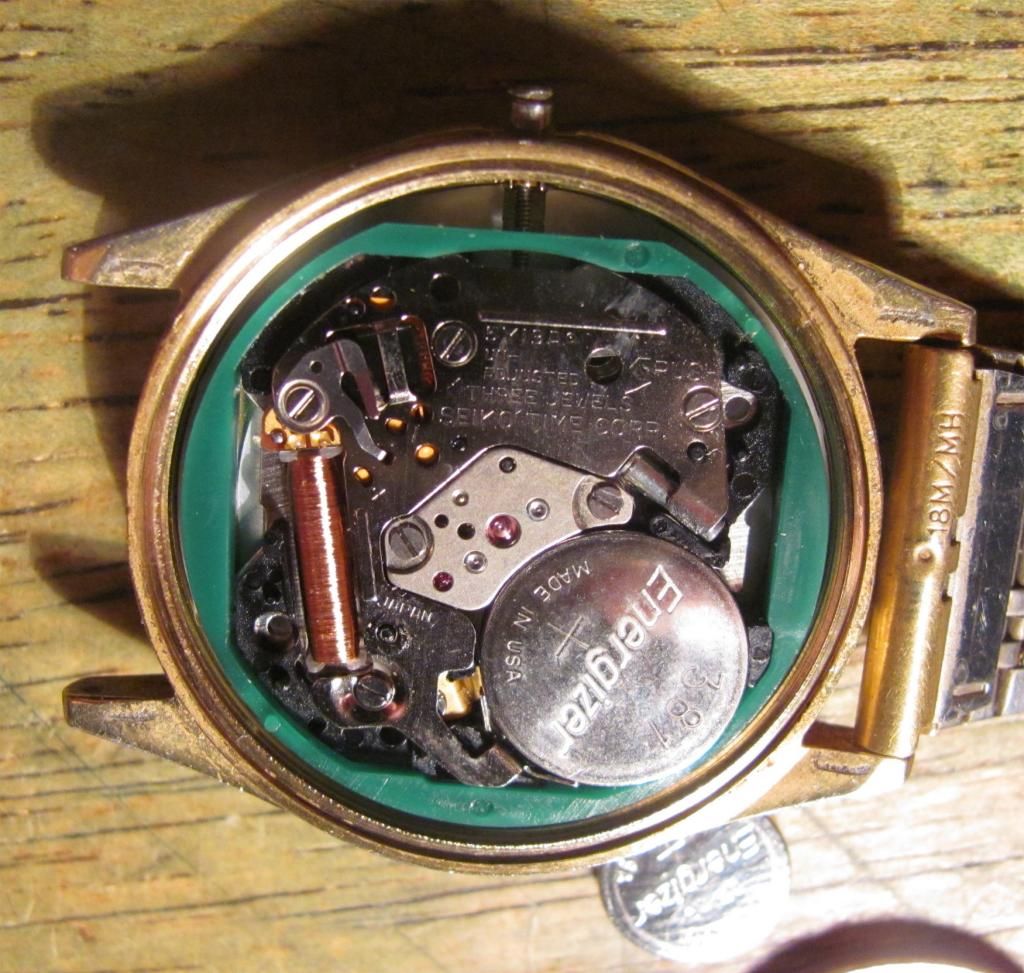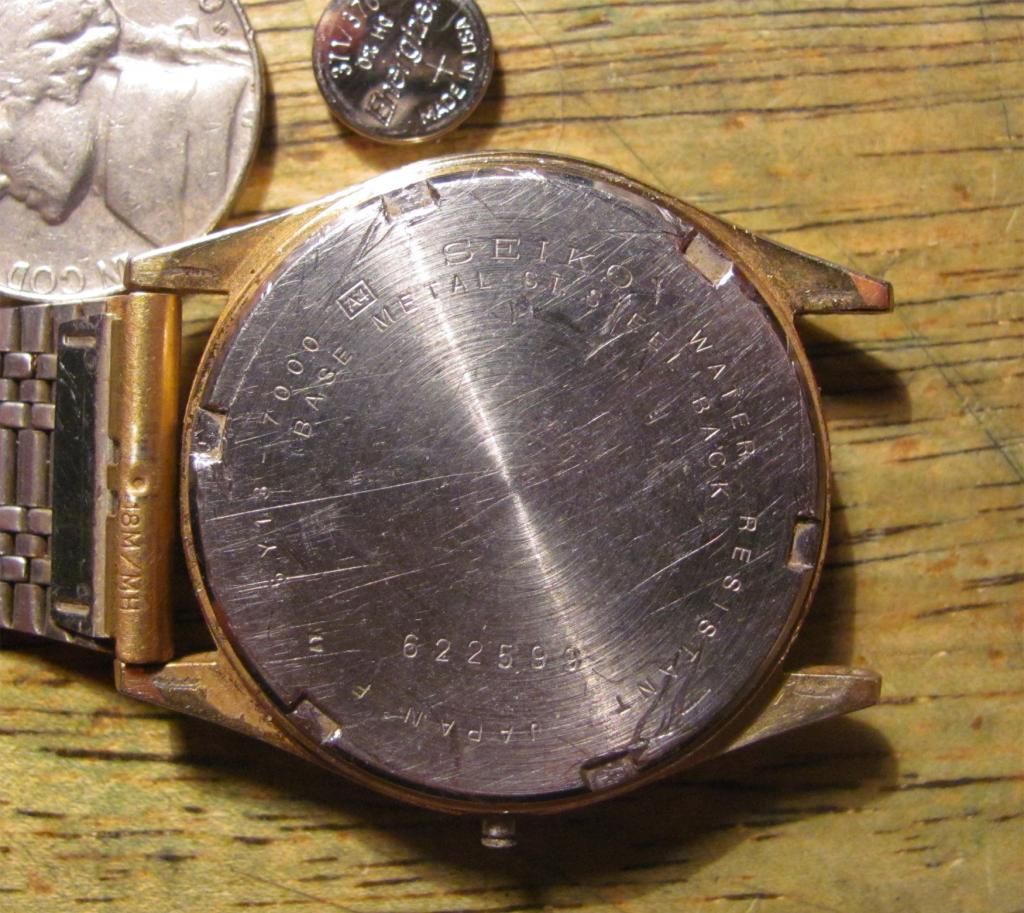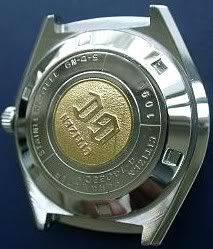|
|
Post by Groundhog66 on Oct 16, 2014 17:48:39 GMT -8
Which are the rarest, of the Seiko movements? I assume there are some short runs out there, or perhaps some that just didn't work out?
|
|
HiBeat
Global Moderator
SEIKO Iko Iko GDTRWS
Posts: 8,863 
|
Post by HiBeat on Oct 16, 2014 19:30:29 GMT -8
I'll throw out the 7001, since it is the non-date version of the 7002- and I've never seen one yet. Just a guess.
|
|
|
|
Post by seikola on Oct 16, 2014 19:31:47 GMT -8
Hi I've always found the 3923A V.F.A a very rare beast, I love the pulsing red LED   seikolas |
|
Adrian-VTA
Global Moderator
Adelaide, South Australia
Posts: 5,327 
|
Post by Adrian-VTA on Oct 16, 2014 19:48:05 GMT -8
I'll throw in the 5126, not too many in circulation. They have an interesting inside.  And the "black ring barrel" I've mentioned before which SEIKO claims never needs rebuilding. I rebuild them anyway.  |
|
|
|
Post by ninja01 on Oct 16, 2014 20:32:03 GMT -8
OK, for TRULY rare you need to look for things like the following: NOTE: I'm only counting fully mechanical movements in here as that's what I know. I. Production watches made in limited quantity: any of the mechanical VFA Grand Seikos of '70s qualify (4580, 4582 6185, 6186) II. Competition Watches A. "Production" Competition Watches the Astronomical Observatory Chronometer series of Grand Seiko that were used in the Swiss Observatory competitions of late '60s. Quoting from an online article @ Watches by SJX, "226 Seiko wristwatches were certified by the Neuchâtel observatory and sold to the public as Astronomical Observatory Chronometers, making them amongst the rarest and most desirable Seiko timepieces ever." B. Competition/Experimentals Examples: - competition movement [cal. 965] nicknamed "The Potato" due to it's shape. Can be seen in Seiko: A Journey in Time ... Chapter 4, pg 42 - Caliber 052 for the 1967 chronometer contest. From Seiko: A Journey in Time, page 43 specifically references a cal. 052, saying that Seiko experimented with ultra-fast beat rate movements, up to 50bps [yes, 50 per second], and that "these were the second generation calibre 052 movements" and that they had "a number of improvements designed to provide stable support for balances operating at high speeds". There is a picture on page 46 that may be a cal. 052, with a shape called a "deformed pentagon" and indicating it is one of the models with "faster movements". In a post about these, someone found an article in Korean that translated Japanese language technical info for one of these & he then commented: If the English translation of the Korean translation of the Japanese original in the article is correct, this version could achieve 10- 32 vibrations (36000- 115200 bph) which is not bad. It notes that 16 vibrations (57600 bph) seemed best.III. Experimental (Internal Development Movements (not necessarily for competitions) Some of these can be seen in BQ Watch site's Museum section: www.bq-watch.jp/museum/Examples:  A hi-beat (28,800bph) calibre 4402 KS. These are normally 18,000bph movement in production. One of the versions of the GS 4420B 20-vibrations [72,000bph!] movement:  Check out the center wheel on each one of the above examples to see a physical difference from the normal production-run calibre. Well, those above are what I know of as the "rarest" types of Seiko movements. There have been a couple auctions or sales offerings of experimentals out of Japan, etc. that I've seen in recent years and the sellers want "Megabucks" for them!! Here's one example I believe to be an experimental: www.ebay.com.sg/itm/Super-RARE-SEIKO-King-Seiko-16-BEATS-Prototype-K432-/180675573185?hash=item2a111a75c1&pt=Wristwatches#ht_962wt_1141. |
|
Tyrone Jenkins
Is a Permanent Fixture
On the day when the wagon's come I just pray that you let me on
Posts: 12,610 
|
Post by Tyrone Jenkins on Oct 16, 2014 20:39:46 GMT -8
6308 (date only version of the famous 6309) Or how bout the 5Y13 (I guess a lesser know variation of the common Seiko 5Y23)   |
|
|
|
Post by ninja01 on Oct 16, 2014 20:55:56 GMT -8
Now, if you wish to expand this to Japanese movements in general, you can then add in Production (Limited) movements such as that used for the Glorious Citizen. It was an ultra-hi-end product with accuracy specification about 1/2 way between a Grand Seiko Special and a GS VFA. The watch uses the 7400 date only movement running at 36,000 beats per hour, and had an accuracy specification of -2 to +3 seconds per day. As a comparison, the Grand Seiko 6155 was specified to -3 to +3 seconds per day.   You can then go to even smaller Japanese companies like Orient and their primarily JDM, hi-end product line to include things like the "10 Beat", Orient's offering in the 36K bph arena. Now, thanks to BQ-Watch Museum, are pictures of this watch! So far, these are the ONLY pictures of an Orient 10 Beat I have ever seen!   calibre 9980 Then there are the mid-20th century Japanese tiny companies which may have only survived a few years, like "Fuji": Phoenix from ca. 1948:   described in: "Domestic Watch Series, 12; Pre-War/Post-War Edition," by Yoshio Nagao and Toshiki Mori. (Tombow Publishers, Osaka, 2002). According to them, Fuji was only operational for 2 years. Another example from BQ Watch Museum:  Movement seems (nearly or exactly) the same as the 1st example. |
|
cobrajet25
Needs a Life!
"Underweared curmudgeon!"
Posts: 3,360 
|
Post by cobrajet25 on Oct 16, 2014 22:19:22 GMT -8
The 33-series electro-mechanicals are pretty rare. They pre-date the 37-series EL-370.
You don't see many of the 6118s, which are a date-only 6119.
Obviously the 35 Astron. Only 100 produced?
The 6109 is rare. It is a heavily economized version of the 6119 made in the mid 1970s.
The 6300 handwind, a 6309 minus day/date and auto winding, is pretty tough to find.
The 3883 GFA quartz is rare. Only seen a handful in my years of collecting.
The 5619 Duo-Time is tough to find...especially when functioning 100%. Damned quickset...
|
|
solex
Timekeeper
Posts: 535 
|
Post by solex on Oct 17, 2014 7:23:58 GMT -8
The 2620b has to be rare because I'm looking for one and it is NLA...
|
|
dasher
Timekeeper
Waiting on 6:00 pm
Posts: 966 
|
Post by dasher on Oct 17, 2014 9:57:15 GMT -8
The movement in the Spork? The what? 4R16?
Dan
|
|
|
|
Post by ninja01 on Oct 17, 2014 15:38:41 GMT -8
One point I usually bring up on these types of discussions: What do we actually mean by "rare"?? In other words, what exactly is the "cutoff point" between common and rare?? Only 10 made, 100? 1000? 5000?? etc. One man's "rare" is another's "not common, but nothing special either" ... so, what is our definition of "rare" going to be for the purpose of this discussion??? UPDATE: Well, since I posted it in another thread just now, here's 2 more that could be considered "rare" ... especially the one on the bottom... a WOMEN'S model of Grand Seiko (cal. 1964)!! The one on top is the 1st Generation of Men's GS (cal. 3180) ... certainly NOT easy to find these days either. One more Women's calibre that may be even "rarer" than the one shown below ... the 1984 GS VFA Womens!! I don't even have a shot of it!!  |
|
Deleted
Deleted Member
Posts: 0
|
Post by Deleted on Oct 17, 2014 18:56:02 GMT -8
The movement in the Spork? The what? 4R16? Dan If it isn't scarce already; give it 10 years and it will be unobtanium  |
|